
By P.J. Norwood and Mike Mather
Photos by Samantha Parlato
The fire service is the epitome of adapting to the changing environment and the needs of the community. The leadership of the fire service continues to evaluate and meet the needs to our dynamic environments and response districts. The fire service of 2020 is not what the fire service of 2000 was, nor what it was in the ‘90s, ‘80s, or any previous era.
The public’s interest in the fire department goes much deeper than making sure we can handle any fire incident. We are the all-hazards agency that continues to be tasked with greater responsibility for helping those who live in or visit our communities. Many agencies have taken on more increased roles with the same or even less staffing. The term “emergency services” better defines our agencies today as we do much more the fight fires.
RELATED
Drifting Towards Catastrophe: What Water Rescue Teams Can Learn from Air Medevac Procedures
Water Rescue: Are You Ready Downstream?
HELICOPTER OPERATIONS IN SWIFTWATER RESCUES
An area that has always received our attention is water-related emergencies. Today, we have more options to address emergencies on or in the water. The hazards in water-related rescues are vast and complicated. Swiftwater, ocean, and lake and pond environments have many different features without considering the environmental impacts.
In 2018, the Coast Guard counted 4,145 accidents that involved 633 deaths, 2,511 injuries, and approximately $46 million dollars of damage to property as a result of recreational boating accidents. These accidents contributed to a fatality rate was of 5.3 deaths per 100,000 registered recreational vessels. (1)
Open water is a term that includes natural bodies of water (lakes, rivers, oceans) and man-made bodies of water (canals, reservoirs, and retention ponds). In 2016, open water drownings made up 43 percent of fatal childhood drownings (2).
If your agency has any open water, you must take these statistics seriously, complete a needs assessment, and look for ways to prevent these incidents. Beyond prevention, you must adequately prepare for and respond equipped and trained to rescue those in need.
Obtaining a Rescue Watercraft
When we complete these needs assessments and look at the areas we need to protect, we must also look for the right mechanism to address these needs. One mechanism that can have a positive impact on your response area and reach many of the victims prior to them drowning is commonly known as a personal watercraft (PWC). There are many PWCs that can be outfitted with trained emergency responders and appropriate equipment to make it a rescue watercraft (RWC) that can quickly, easily, and professionally meet the needs of your community
RWCs have many positive attributes that make them an attractive purchase for departments. One of the main reasons that agencies purchase RWCs is that they can cover a large distance quickly with minimal personnel in mildly rough conditions. This is where is an RWC shines over all other rescue watercraft. Whether it is a lake, oceanfront, bay, fast-moving river, or tidal area, this type of craft can go across a lake/pond into tidal or other ocean areas or up or down river for a hasty search. It can also transport gear or personnel very quickly as long as they have room to get up on plane.
Acquisition of any apparatus is a major undertaking for an agency. Watercraft are no different and quite possibly more difficult. Most members of a department know how to drive a vehicle, but the operation of watercraft is not necessarily intuitive and often counter-intuitive. First, your agency must determine if an RWC is the right craft for the job and if you have right the people to operate it.
Next you must consider the environment. Though RWCs have a shallow draft when on plane, they need close to three feet of depth to get up on plane. Depending on the model and the load it is carrying, being up on plane may require a fair amount of speed, which isn’t always a good thing. Small, shallow, grassy bodies of water with limited access are not great for an 800-pound RWC.
Deciding which PWC to purchase is a big decision. As far as manufacturer, there are multiple solid brands. A person can drive themselves crazy determining which brand is better, but maintenance is critical, whichever you choose. A big factor is which dealership is closest and who you can you develop a relationship with where they are willing to prioritize your department’s RWC if there is a problem, even during their busy season, to minimize being out of service.
Three-person model PWCs offer a more stable platform, able to carry more weight and generally designed with more torque. Power is what we really need, not speed, although there is plenty of speed to be had. Supercharged models are not necessary and are potentially just another thing that could break. Hull design is also a serious consideration. There are different hull designs for various applications, and some of these bode ill for an RWC set up. Most “stepped” hulls are not ideal. Though they do lessen drag and increase maneuverability and can reduce fuel consumption, these benefits are offset by a loss of stability and increased squatting when rolling on throttle.
Training
The success of your program does not rest solely on acquiring the proper machine, but the people who will be operating this valuable equipment. Operating an RWC is a specialty and should be treated as such. Your response model should help define how many operators you need. The operator position is one of two positions that must be filled. Each deployment must be a crew of two trained individuals. Both individuals should be crossed trained in both the operator and rescue swimmer position. Agencies should establish a set of standards that include the ability to swim and tread water in adverse conditions. These members must also be physically fit to operate and perform victim retrievals. Standard for selection of personnel should be taken seriously and each department should be defining the standards for your agency.
Finally, will your department train with the vehicle regularly? Will members be able to use it and maintain it, and not just trip over it in the bay? This program will fail if personnel are not given an opportunity to practice launching and operating on a regular basis.
Establishing a training, maintenance and practice program for an RWC is a long-term endeavor. If your department is seriously considering this tool, it may be best to send a couple representatives to a course or to a department that uses an RWC to get a feel for the application. After the decision has been made to pursue a program of your own, find formal training in your area, ideally where you are most likely to respond.
Operating an RWC take a significant amount of time of practice and training. Remember, skills are perishable. RWC operators must use their skills in realistic training scenarios. This will provide a concrete foundation for when a true emergency presents itself. Your crews must complete training on both basic operations and advanced. Every department’s RWC operations will vary in different sections of your response district. Identify potential operational areas and have your operators learn both the areas and how to operate in each area. This cannot be done in a classroom only. Operators must be out learning their response area up close and personal. This should be done in good weather and water conditions to start, however many incidents occur in less than ideal weather conditions, which will change the environment and the operations.
Training should include everything from receipt of call to cleaning and storage of the RWC after a response. Deployment and retrieval of the RWC will vary greatly depending on your response model. These procedures should be trained upon to skill mastery. Agencies should set up basic obstacle courses to practice handling and maneuvering at low, moderate, and final high speeds. Your training should focus on the practice of retrieving victims. We recommend starting with water rescue mannequins or even tennis balls before placing a live victim in the water. Retrieval of victims is a skill that we must practice for multiple different scenarios under a variety of water conditions. Rescuing a victim in calm water conditions is very different in water that has one to three-foot waves. These can range from a conscious victim, unconscious victim, injured victim to a swimmer stranded on a vessel, rocks, or other outcropping. These retrievals should be prepared for in both good and bad weather scenarios.
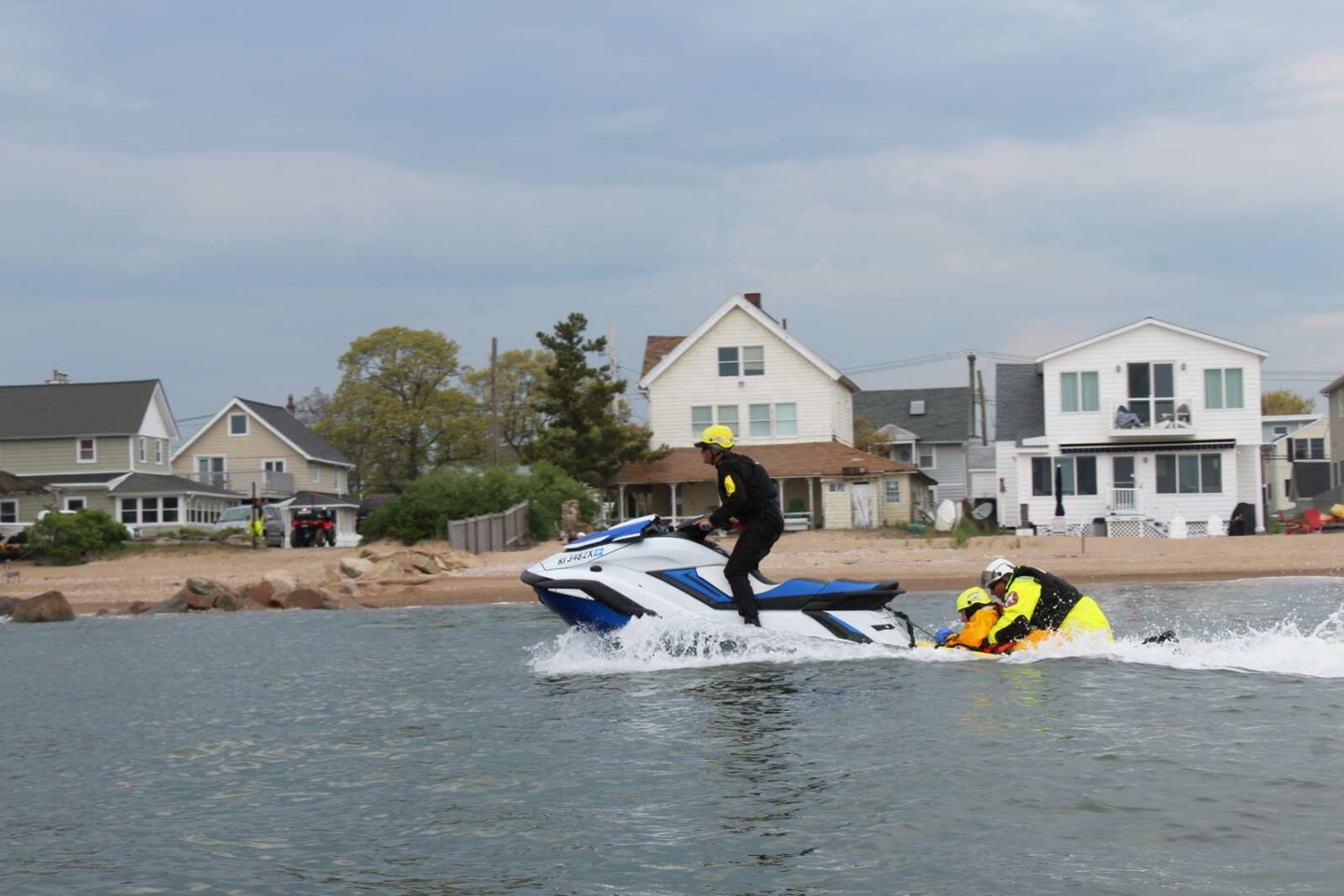
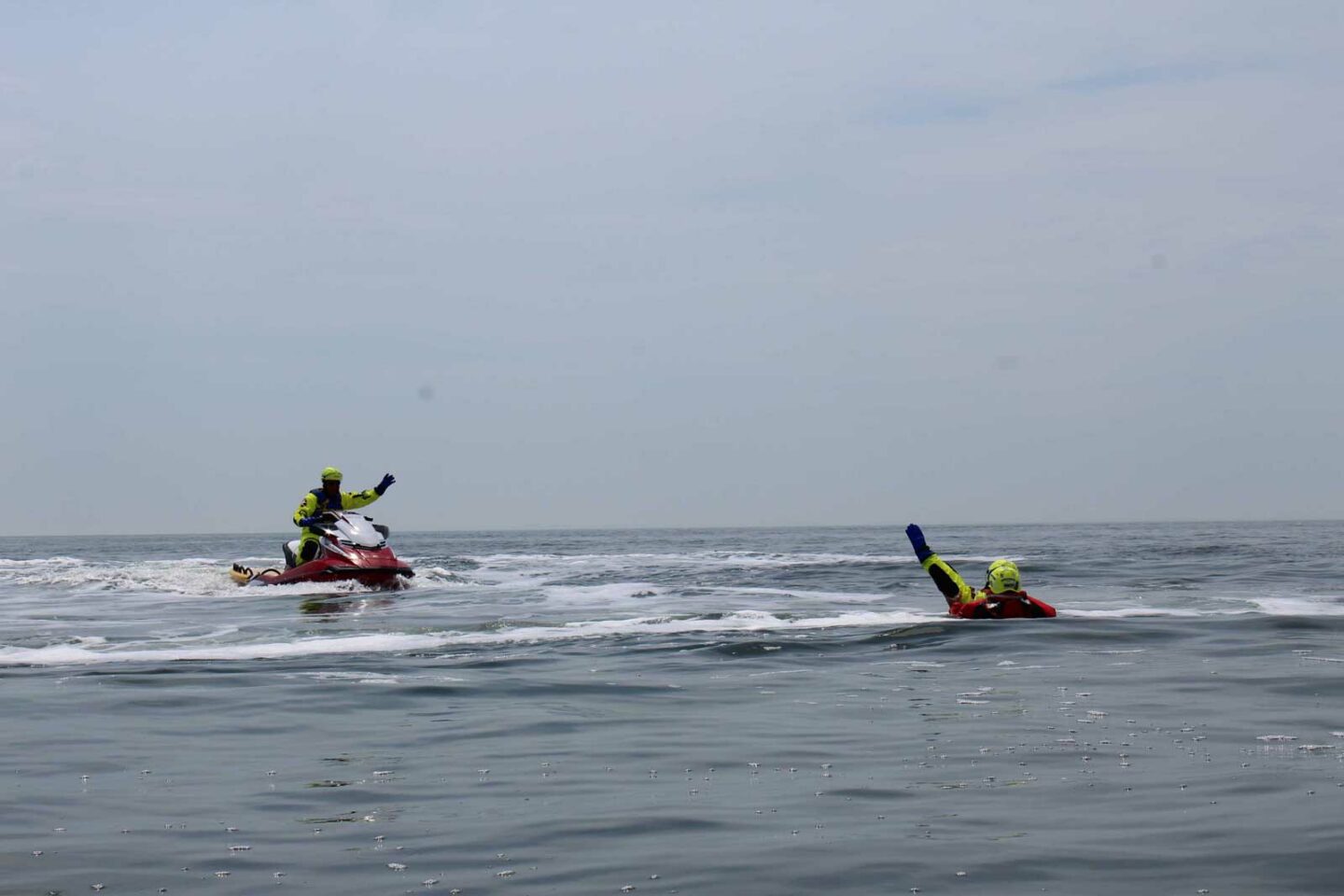

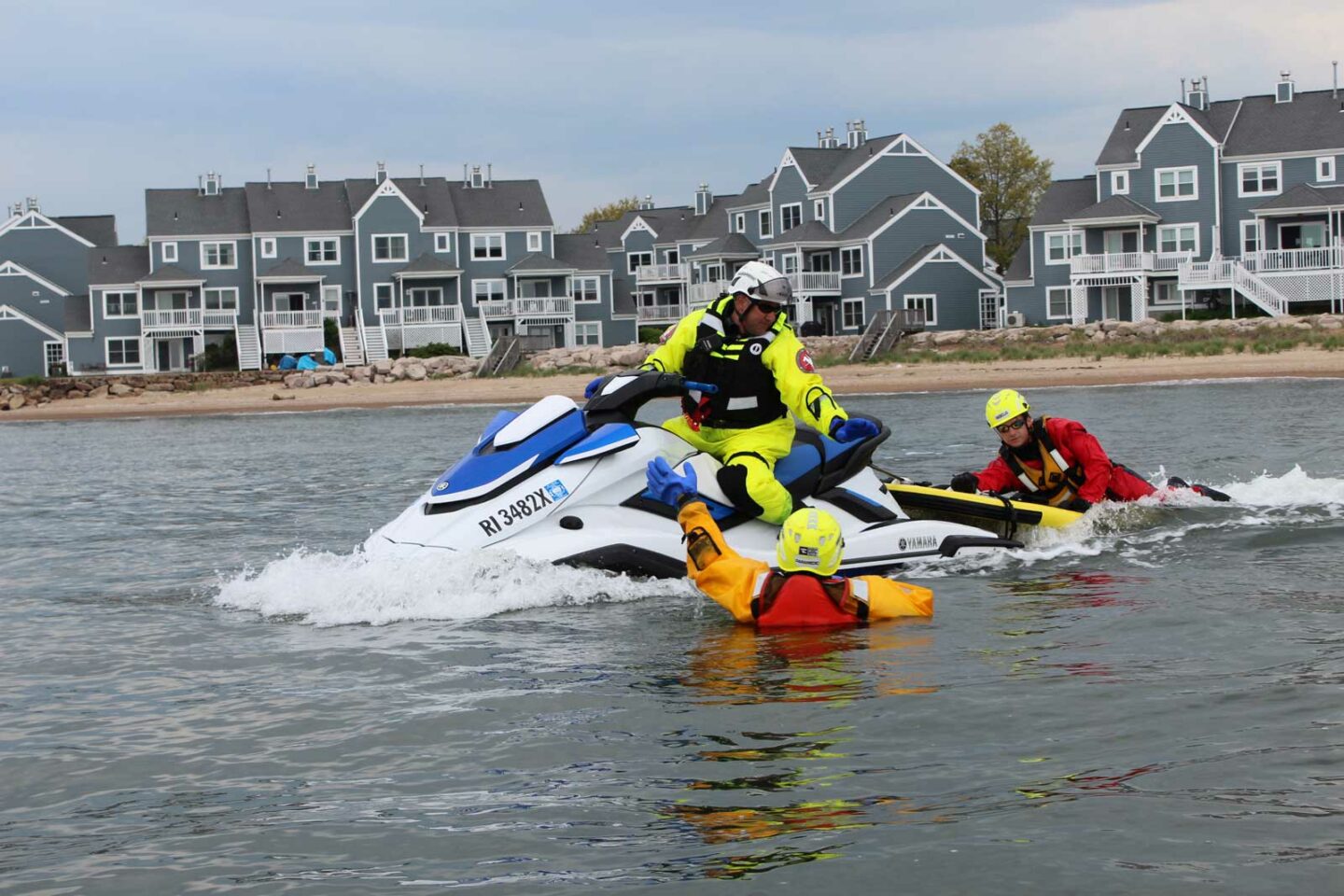
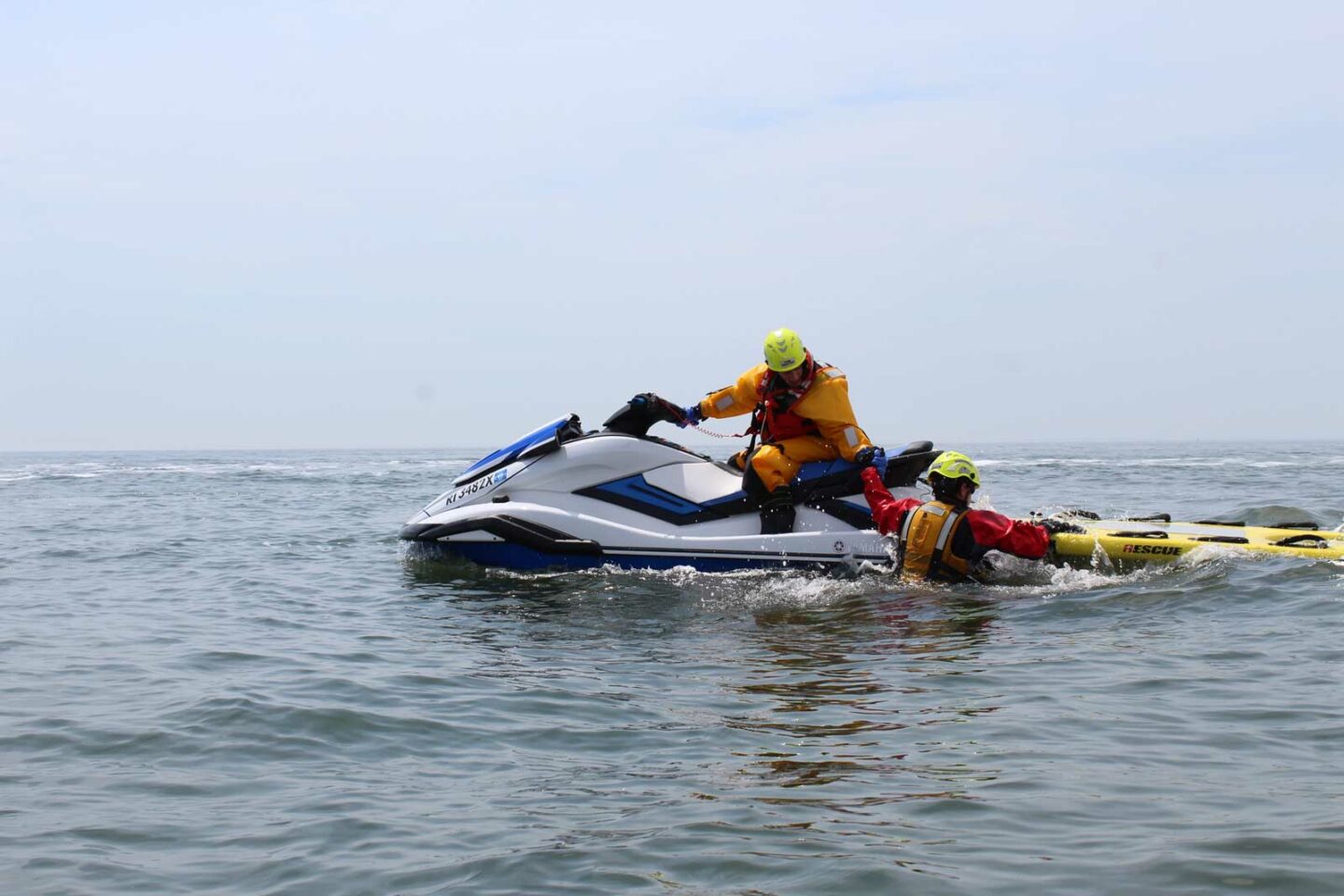

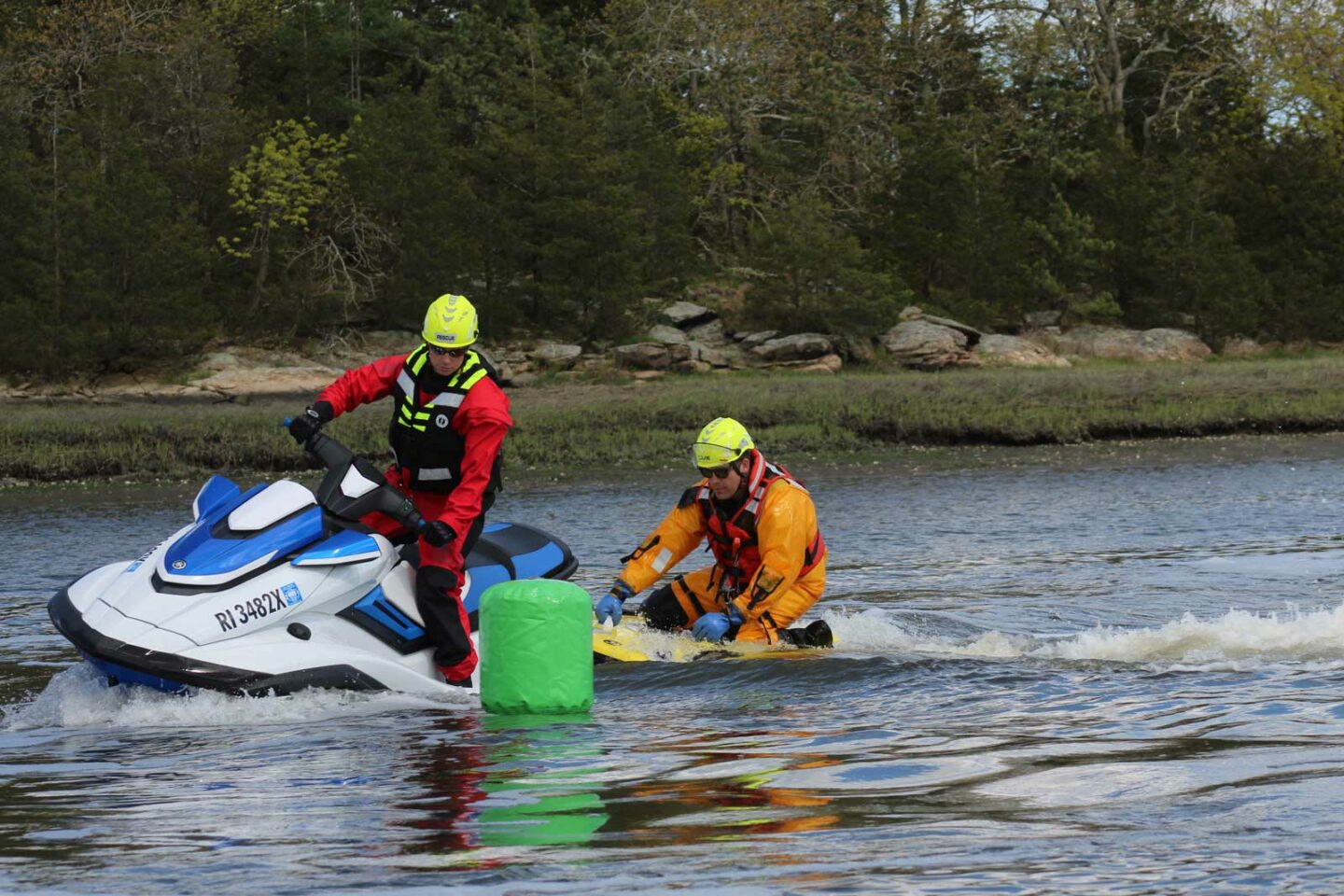
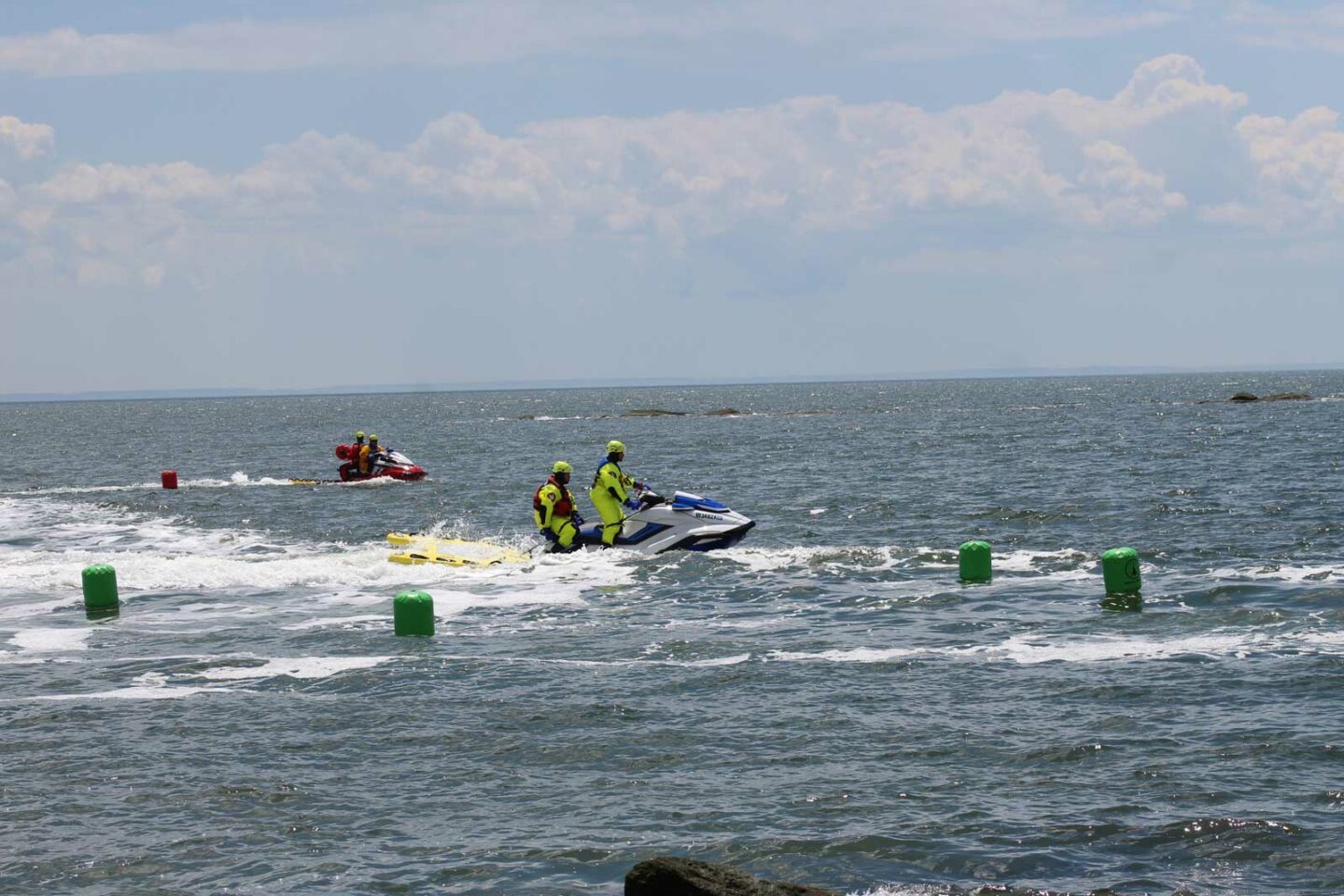
Another area that crews need to be prepared for is emergency situations. Let’s face it, emergency incidents do not go perfectly. While using an RWC we can suck up debris, hit a rock, or even have a mechanical failure. The operator and rescue swimmer should be prepared to troubleshoot and take corrective action even while out on the water or during an active incident.
Guidelines and Procedures
All departmental functions should be covered with standard operating guidelines (SOGs). Agencies must identify their procedures from equipment carried, training, deployment, pre- and post-deployment procedures, and preventative maintenance. When an agency looks at the training piece, consider bringing in a subject matter expert. An RWC is not a piece of equipment that can be easily trained on to proficiency without a solid foundation of RWC use. Piloting an RWC is not the same as using a jet ski for recreational purposes. Departments should design a daily checklist as well as pre- and post-deployment checklists. These items are critical pieces and must be a focus of the SOGs. The deployment piece of the policy is also critical. Departments need to determine what they can and will respond to and what calls they cannot respond to. Agencies should also consider all environmental and geographical concerns to help write their deployment policies.
Having the RWC with an operator and rescue swimmer is only part of what you will need. Identify additional equipment during your needs assessment. All personnel will need to wear a dry suit, wet suit, or appropriate exposure suit; booties; a personal floatation device (PFD); rescue helmet; and gloves and eye protection, at a minimum. Additional items to be considered are swimming fins, dive knife, PFDs for any victims rescued, radio communications, depth finders, spare lanyards, basic tool kit (for clearing the intake grate), charts or maps in addition to GPS of the response area, throw-rope for towing and possible rescues, spare bilge plugs, and spare safety lanyards.
The main item that makes a PWC an RWC is the rescue sled attached to the back of the vehicle. As with all equipment options, there are many of these to choose from. Of these choices, you have the option to go with an inflatable or a rigid model. Inflatables have the advantage of rolling up smaller, generally softer rounded edges, and a lighter weight. Disadvantages are they are not as durable due to potential puncture, cuts, or valve damage. Another problem is that if they are left in direct heat, the air pressure inside could rise to the point of rupture. Rigid boards are more durable but more cumbersome to store. Attaching any sled to your PWC will take research and consideration. There are adapters made for some models that may require modifications such as drilling and cutting parts on your brand-new machine.
Maintenance
Any piece of equipment we use must have a defined maintenance program. We recommend speaking to your local manufacturer representative. However, beyond the periodic maintenance, an RWC takes time and effort to maintain on a regular basis. The amount of time can be directly related to how much it is used and the environment it is used and trained in. Saltwater use requires through cleaning and sanitizing after every use. Skipping this step just once can be catastrophic for your machine.
RWC are a proven valuable resource in the right situations with trained personnel who can and will have a significant positive impact on your community. However, the process of selecting an appropriate machine and the proper personnel, designing a training program, designing standard operating guidelines, and outlining a preventative and routine maintenance program are all critical pieces that must not be overlooked. Creating a sustainable program that will save lives will require time and effort from the administration, operations, and training staff.
REFERENCES
(1) https://uscgboating.org/library/accident-statistics/Recreational-Boating-Statistics-2018.pdf
(2) https://www.safekids.org/sites/default/files/fast_facts_ow_drowning.pdf
P.J. NORWOOD is a deputy chief training officer for the East Haven (CT) Fire Department and has served four years with the Connecticut Army National Guard. He is an FDIC International classroom, workshop, and H.O.T. instructor; a Fire Engineering advisory board member, and a Fire Engineering book and video author. He served on the UL Technical Panel for Residential Attic Fire Mitigation Tactics and Exterior Fire Spread. He hosts a monthly Fire Engineering blog talk radio and Google hangout. He is certified to the Instructor II, officer III, and Paramedic levels.
MIKE MATHER started Mather Rescue in 1991, traveling extensively teaching courses as well as developing rescue techniques, curriculum and programs. As a Rescue 3 International, American Canoe Association (ACA), United States Lifeguard Association (USLA), International Technical Rescue Association (ITRA) Instructor Trainer Educator, he has taught technical rescue courses all over the U.S. as well as internationally. He has taught courses on swiftwater, boat operations, RWC/PWC, and technical rope. He has received the ACA Excellence in Instruction Award and a Higgins & Langley Award.

